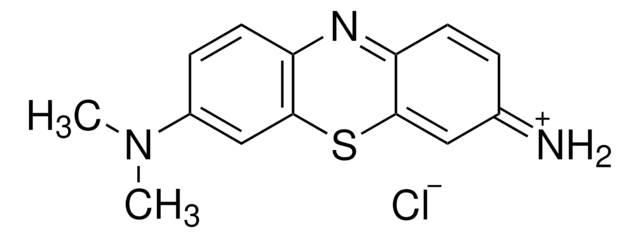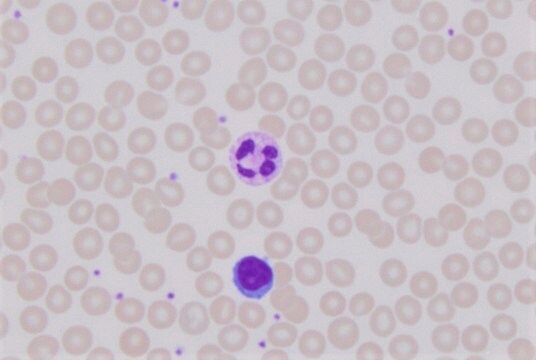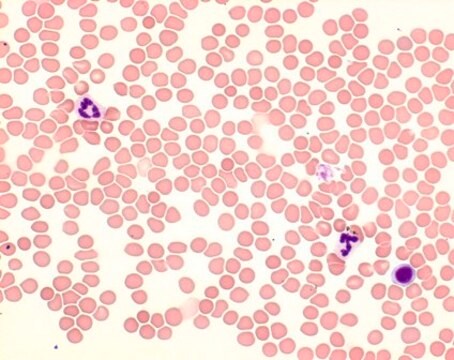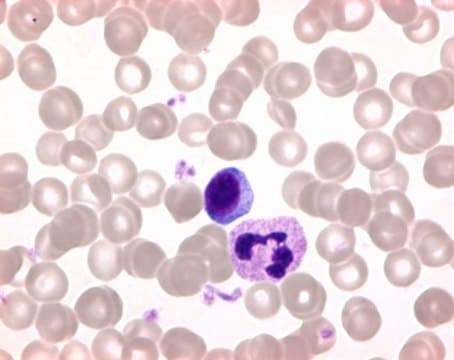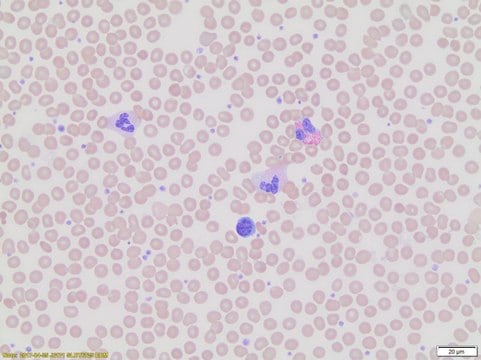32884
Giemsa Stain, Modified Solution
according to Giemsa
Sinonimo/i:
Azure eosin methylene blue, Giemsa solution
About This Item
Prodotti consigliati
Stato
liquid
Livello qualitativo
Qualità
according to Giemsa
tecniche
UV/Vis spectroscopy: suitable
Colore
dark blue
pH
6.9
Densità
1.036 g/cm3 at 20 °C
Compatibilità
passes test for UV spectrum
applicazioni
diagnostic assay manufacturing
hematology
histology
Temperatura di conservazione
room temp
Stringa SMILE
[Cl-].CN(C)c1ccc2N=C3C=CC(=[NH2+])C=C3Sc2c1
InChI
1S/C14H13N3S.ClH/c1-17(2)10-4-6-12-14(8-10)18-13-7-9(15)3-5-11(13)16-12;/h3-8,15H,1-2H3;1H
NALREUIWICQLPS-UHFFFAOYSA-N
Cerchi prodotti simili? Visita Guida al confronto tra prodotti
Descrizione generale
Applicazioni
Altre note
Principio
Avvertenze
Danger
Indicazioni di pericolo
Consigli di prudenza
Classi di pericolo
Acute Tox. 3 Dermal - Acute Tox. 3 Inhalation - Acute Tox. 3 Oral - Flam. Liq. 2 - STOT SE 1
Organi bersaglio
Eyes,Central nervous system
Codice della classe di stoccaggio
3 - Flammable liquids
Classe di pericolosità dell'acqua (WGK)
WGK 2
Punto d’infiammabilità (°F)
51.8 °F - closed cup
Punto d’infiammabilità (°C)
11 °C - closed cup
Elenchi normativi
Forniamo informazioni su eventuali restrizioni prevalentemente per i prodotti chimici. Per altre tipologie di prodotto siamo in grado di fornire soltanto informazioni limitate. Nessuna segnalazione significa che nessuno dei componenti è citato in un elenco. È dovere dell’utilizzatore assicurarsi che il prodotto venga impiegato in maniera sicura e a norme di legge.
EU REACH Annex XVII (Restriction List)
Scegli una delle versioni più recenti:
Possiedi già questo prodotto?
I documenti relativi ai prodotti acquistati recentemente sono disponibili nell’Archivio dei documenti.
I clienti hanno visto anche
Il team dei nostri ricercatori vanta grande esperienza in tutte le aree della ricerca quali Life Science, scienza dei materiali, sintesi chimica, cromatografia, discipline analitiche, ecc..
Contatta l'Assistenza Tecnica.